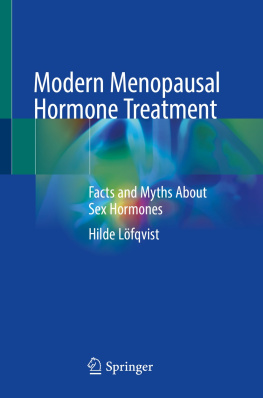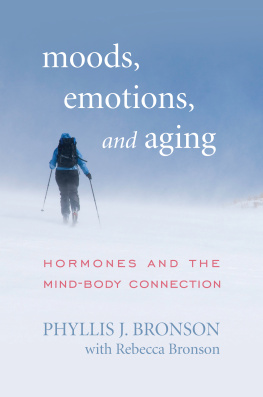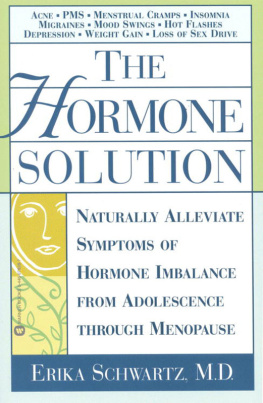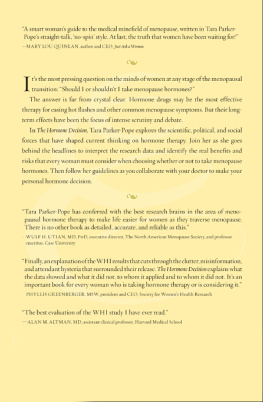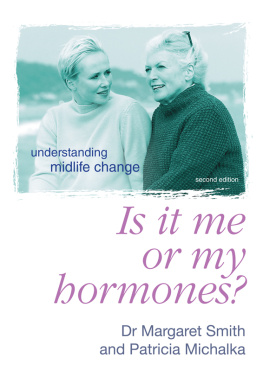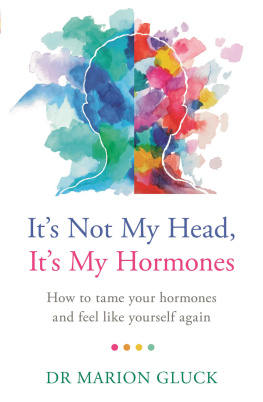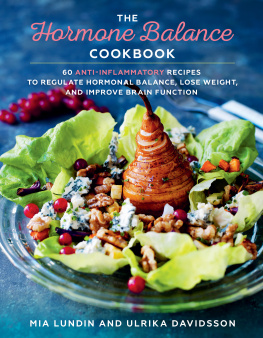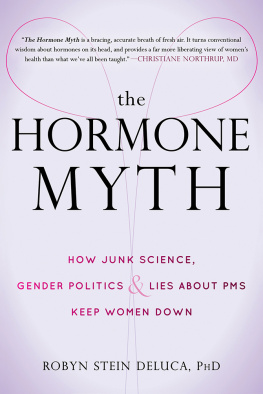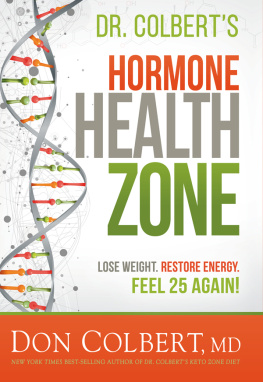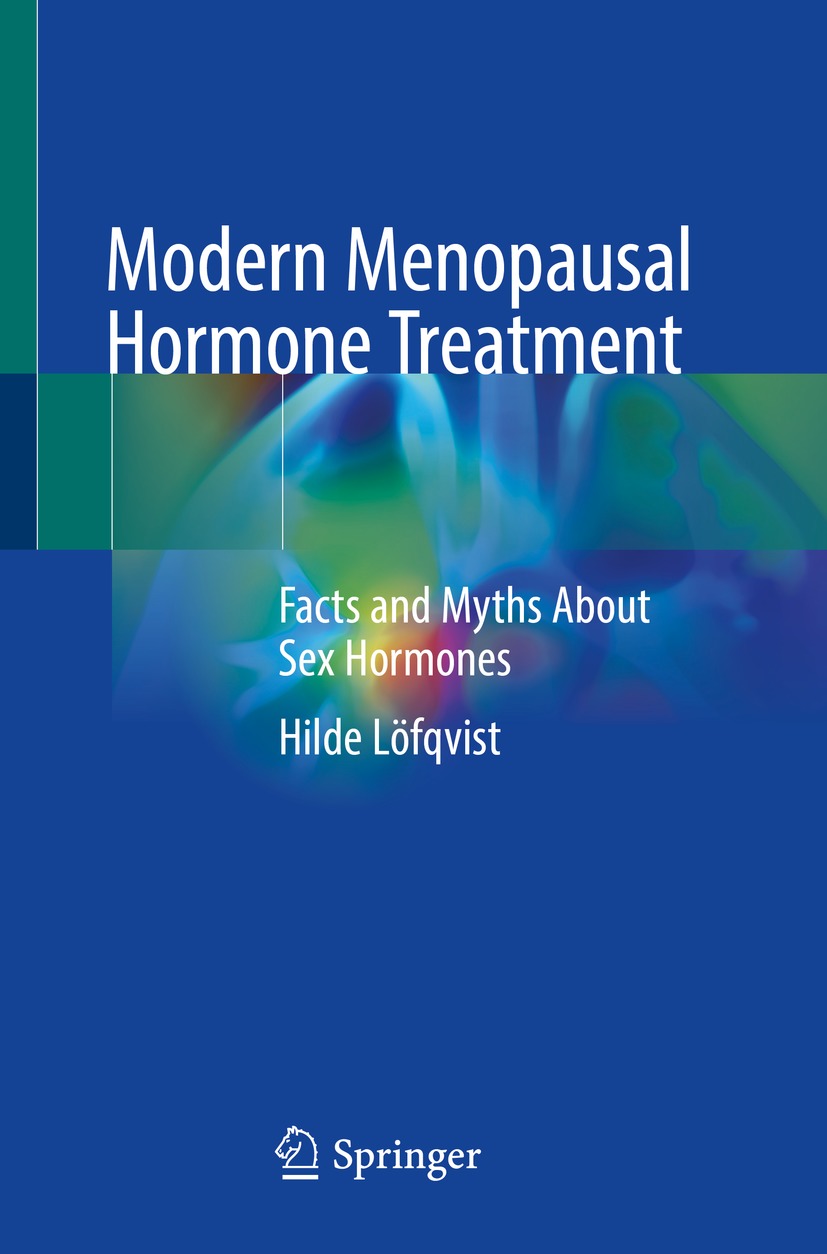Hilde Lfqvist
Gynaecology and Obstetrics, Specialist outpatient clinic for menopausal disorders CevitaCare, St Grans Hospital, Stockholm, Sweden
ISBN 978-3-030-92734-9 e-ISBN 978-3-030-92735-6
https://doi.org/10.1007/978-3-030-92735-6
1th edition: Hilde Lfqvist 2019
Hildemarias AB 2022
This work is subject to copyright. All rights are solely and exclusively licensed by the Publisher, whether the whole or part of the material is concerned, specifically the rights of reprinting, reuse of illustrations, recitation, broadcasting, reproduction on microfilms or in any other physical way, and transmission or information storage and retrieval, electronic adaptation, computer software, or by similar or dissimilar methodology now known or hereafter developed.
The use of general descriptive names, registered names, trademarks, service marks, etc. in this publication does not imply, even in the absence of a specific statement, that such names are exempt from the relevant protective laws and regulations and therefore free for general use.
The publisher, the authors and the editors are safe to assume that the advice and information in this book are believed to be true and accurate at the date of publication. Neither the publisher nor the authors or the editors give a warranty, expressed or implied, with respect to the material contained herein or for any errors or omissions that may have been made. The publisher remains neutral with regard to jurisdictional claims in published maps and institutional affiliations.
This Springer imprint is published by the registered company Springer Nature Switzerland AG
The registered company address is: Gewerbestrasse 11, 6330 Cham, Switzerland
Foreword
Many books have been written on the transition period and the treatment of women going through the menopause, especially with regard to hormone therapy. The common theme is hormones and how they (oestrogen and progesterone) are produced in the ovaries. These hormones may also be chemically engineered and altered, giving effects, which are similar to but not exactly the same as the natural body-identical hormones. These hormones are called oestrogens (bio-identical or altered molecules) and progestins (always altered bio-identical progesterone). Books on hormone replacement therapy have not been the focus of attention on the market during the recent years. When the American Womans Health Study (WHI) was released, in 2002, the hormone replacement therapy arm showed increased cases of breast cancer, stroke and venous thrombosis. As the study was very large and scientifically correct, with randomized controlled treatment and placebo groups, the gold standard method for finding the best treatment, the impact on hormone therapy was detrimental: hormone treatment was associated with bad outcomes. Both doctors and their patients were afraid of the increased risk for breast cancer, stroke and thrombosis. However, the aim of the WHI study was not to find the optimal menopausal treatment. The aim was to prove that female hormone treatment would keep women young, healthy and prolong life. Earlier observational studies, without randomized placebo groups, pointed in this direction. When the WHI study showed the opposite, most physicians and patients abandoned hormone treatment, almost overnight. Since the WHI study, menopausal problems have been treated mainly with nonhormonal remedies, especially plant derived substances, without having evidence of efficacy or risks.
During the last 35 years the discussion about the hormone treatment has re-emerged. Earlier experiences and the scientific plausibility of hormone efficacy have encouraged scientists to undertake elaborate new studies. These studies show different outcomes from the WHI study: when hormone molecules are the same as or very similar to the molecules produced in the human ovaries, the incidence of breast cancer, stroke and thrombosis may be reduced. These hormones were not available at the time of the WHI study, where the oestrogen, available at the time in tablet form, was extracted from the urine of pregnant mares (conjugated equine oestrogens, CEE), and tablets of synthetic progestins were used instead of body-identical progesterone. Reevaluations of the WHI study made progestins responsible for the increased risks of breast cancer. Additionally, transdermal oestrogens, as patches or gels instead of tablets, almost eliminated the risks of thrombosis and stroke shown in the WHI study. In addition, it was noted that the women, participating in the WHI study, were older with a mean age of 63 years, 50% having risk factors as overweight, hypertension, diabetes and a history of smoking.
In spite of this new knowledge the WHI-shock is still present in medicine and research, and especially within the media, where it still causes controversies. This is why this new book on hormone therapy written by a gynaecologist with 40 years of experience as clinician, treating menopausal women in accordance with modern international research, is so important and published just at the right time. The purpose of this book is to equip health providers with facts on modern hormone treatment of the transition and menopause of women. Considering that about one-third of all women suffer menopausal symptoms, which interfere with activities of daily life, this book has a clear mission. Furthermore, almost all alternative treatments are not able to show the same results as hormone treatment can achieve, for example, the prevention of osteoporosis.
This book demonstrates, not only the principles of hormone menopausal treatment, but also the particular situation of the hormonal transition as part of the female life cycle, starting with the birth of a female baby, through puberty and adolescence, until menopause (the last natural menstruation). Using the internationally accepted classification of the transitional stages of the menopause (pre-, peri- and post-menopause), their typical climacteric symptoms and duration are succinctly shown. The author describes the consequences of declining hormones and how these are claimed to be responsible for the complaints and diseases described. After each chapter the contents are summarized, both for the medical professional and for the climacteric woman. Alternative treatment options and various recommendations such as sports, diets and lifestyle adjustments, are briefly discussed. It is emphasized that menopausal symptoms arise due to the physiological decline of ovarian hormone production and should, therefore, not be seen as a disease. This was not known 120 years ago, at a time when the median age of menopause, at 50, coincided with a womans median life expectancy. Today, however, women may live happily until at least 80 years of age. This creates a new situation for the postmenopausal woman, who may suffer from degenerative bone-, cardiovascular or metabolic diseases, directly or indirectly associated with the deficiency of ovarian hormones (oestrogens and progesterone). The challenge and ambition is to find treatments to compensate for the loss of ovarian hormonal function and to maintain the womans quality of life.

